
Review on 💻 HP Chromebook 14 Laptop with Intel Celeron N4000, 4 GB RAM, 32 GB eMMC, 14” HD Display, Chrome, Lightweight Computer featuring Webcam and Dual Mics – Ideal for Home, School, Music, Movies (14a-na0021nr, 2021) by Matt Venable

All-day battery life. Slow. Clumsy operating system. Suitable for general web browsing and multimedia viewing
I have been in the IT professional industry for over 18 years and have been involved with technology both professionally and personally. I'm an enthusiast through and through who loves exploring what's new in the industry. In this particular HP Chromebook 14 (2021) review, my extensive experience with Android, Apple iOS and Windows phones and tablets will help you understand what this laptop is good for and what it is not. WHAT IS CHROMEBOOK? First, it's important to understand that a Chromebook is just that - a laptop (laptop) based on the Google Chrome operating system (OS), software that allows you to use and interact with the device. It offers a minimalist web browser interface that is very different from Windows and macOS, but looks familiar to Android users. This particular HP Chromebook offers the Google Play Store from which you can download apps and games and enjoy books, music and movies - just like a Samsung smartphone or Google TV. It also offers apps from Google Chrome Web Store that are very limited in functionality but can enhance your browsing experience with extensions (plug-ins). Chrome OS is now the dominant computing system used in the education market, an area Microsoft has been trying to expand. to challenge their failed attempts with Windows RT and Windows S-Mode. Apple also lags behind Google's Chromebook platform. BRIEF DESCRIPTION: Chrome OS, released in 2011, looks a lot like an Android tablet built into a laptop form factor. It doesn't offer the full PC/Mac experience and is essentially a (usually) cheap/low-performing computer whose primary interface is the Google Chrome web browser. Downloadable apps will constantly remind you that Chrome OS isn't meant to be used. like a full desktop (like Windows and MacOS) - they run with garbled, often frustrating user interfaces that don't make use of the mouse and keyboard. If you've used an Apple iPad and downloaded iPhone apps (with black bars on either side of the screen) to it, this is how Google apps behave on this Chromebook. The fact that this HP Chromebook DOES NOT have a touchscreen adds to the frustration when trying to use these apps like Facebook, Facebook Messenger and more. There are some apps that take full advantage of the entire screen: Plex, Netflix, Chrome Browser, Word, Excel, etc. On the other hand, many of their interfaces are designed for touch, not a keyboard and mouse combination. Now that you know some of the key user and software differences between a Chromebook and a Windows/macOS laptop, let's discuss what's great about the HP Chromebook 14 (2021). BENEFITS - Light weight (3.25 lbs) - 12.8″L x 8.6″W x 0.7″H - Great all-day battery life - Nice, clean, simple hardware design - Minimalistic and easy for basic computing - Inexpensive, although competing Windows laptops may offer a bit more for the same price - Great for casual web browsing and occasional Android app use. The brain of the computer, the Intel Celeron N4000 processor, is well suited for this use case and offers low power consumption. The 768p resolution puts it more in HD 720p territory than the sharper 1080p. Many apps and browser tabs worked well, although 4GB of memory (RAM) limits concurrent execution without impacting overall performance. The dual microphones pick up audio well for video conferences. Access to the full range of apps, games, music, movies and books from the Google Play Store. -- Graphics based on an integrated Intel UHD 600 chip -- Extremely low virus risk (but Google Chrome browser apps and extensions can still steal your data and more) -- Commonly used for Google Classroom and the education market since functionality may be limited by supported Google admin controls - 32GB internal eMMC storage - while this is sufficient for regular computing, you may quickly find that you are running out of storage space and need to supplement it with a microSD card - eMMC- Storage is very slow compared to drives SSD - Storage expansion via microSD card slot - Tested to work with a 128GB SanDisk card - SanDisk and Kingston are the leading SD card manufacturers that I recommend for their reliability . SanDisk Extreme offers a lifetime warranty and this is the series I personally always get - you should always back up your important files) - Linux subset support - USB-C PD rechargeable - 2 USB-C PD and 1 USB-A Connection -Bluetooth and WiFi speakers set up by Bang Olufsen were loud enough to enjoy a movie in a quiet room, but didn't really surprise me. Not comparable to the much more expensive Microsoft Surface display (or even the cheaper Surface Go) - Frustrating keyboard with some missing keys like delete, caps lock (there is a shortcut key to toggle it on and off) and more. - Requires constant Internet connection for most tasks and applications. - If you are offline, you can still only use part of the applications. - Not really suitable for travel if you can't stay online in some way. - Limited storage space, making you more dependent on cloud storage services like Google. Cloud, Microsoft OneDrive, Dropbox, Box - Doesn't have full functionality like a Windows/macOS computer, including seamless file server access, user account control, etc. - Windows/macOS can do everything this Chromebook Plus can do, faster and bigger - Microsoft Office is just as Limited web or Android app version available. You still need Windows or MacOS to use the full functionality. -- Full-featured programs not available on Chromebooks such as Adobe Lightroom, Photoshop, Premiere video editing, etc. -- May be too minimalistic or basic -- Limited hardware support. Not all devices that you connect to your Chromebook will work, even if they work fine with Windows/MacOS. Poor interaction with Windows/MacOS computers e.g. B. File Sharing. The screen is not touch-sensitive, some applications and games are frustrating or impossible to use. enjoy - Screen cannot be detached for use as a standalone tablet (like Microsoft Surface or Surface Book) - Frustrating, limited or non-existent user account controls like parental controls, especially if your Google account was created with Google Apps/Suite/G Suite/Workspace or whatever Google decides to rebrand as their services - Storage and internal "disk space" cannot be upgraded - Tiny sound with little bass - Slow switching between users - No wired network port (RJ-45 Ethernet) for Wi-Fi is not available. - Search Google for "Chromebook Shortcuts" to see more - Press Search+L to lock screen - You can go to "Settings" and type "pin" to set up a PIN instead of constantly entering your Google Account password. CONCLUSION For those who appreciate the flexibility of full-featured software and easier connectivity to computing services, affordable Windows-based laptops are the best choice for a power user like me. For those who want simplicity and basically do everything through a web browser, consume media through apps, and want a more Android and/or Linux experience, a Chromebook like this one from HP is a great option. However, both options are excellent to use. as a travel laptop for blogging, research, and more, but in the case of a Chromebook, you can't use it much if you don't have internet access. We'll be using our Chromebook primarily for day-to-day web browsing, media viewing, writing similar reviews, and some unsupervised schoolwork.
- Laptops
- Something else
New products
Comments (0)
Top products in 💻 Laptops
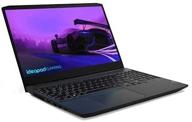
Lenovo IdeaPad Gaming 3: 15.6 Inch AMD Ryzen Gaming Laptop with RTX 3060 6GB GDDR6

118 Review
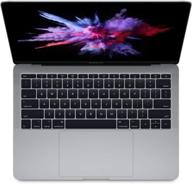
Apple MacBook 13 Inch 2 3GHz 256GB

92 Review
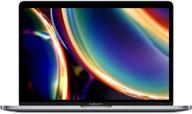
13-Inch Apple MacBook Pro with 8GB RAM and 512GB SSD Storage in Space Gray - Previous Model

77 Review
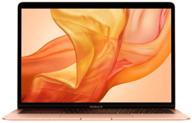
Renewed Apple MacBook Air - 13-inch Retina Display, 💻 1.6GHz Dual-core Intel Core i5, 256GB in Gold (Latest Model)

156 Review
Another interesting products
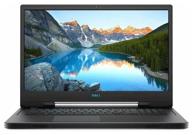
Notebook DELL G7 17 7790 (1920x1080, Intel Core i5 2.4 GHz, RAM 8 GB, SSD 256 GB, HDD 1000 GB, GeForce GTX 1660 Ti, Win10 Home)

26 Review
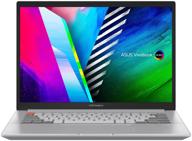
14" ASUS Vivobook Pro 14X OLED N7400PC-KM059 2880x1800, Intel Core i5 11300H 3.1GHz, RAM 16GB, DDR4, SSD 512GB, NVIDIA GeForce RTX 3050, no OS, 90NB0U44-M01450, silver

26 Review
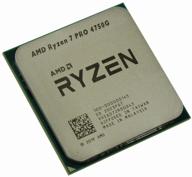
Processor AMD Ryzen 7 PRO 4750G AM4, 8 x 3600 MHz, OEM

11 Review

Refurbished 2019 Apple iMac with Retina 4K/3.6 GHz Intel Core i3 🖥️ Quad-Core (21.5-Inch, 8GB RAM, 1TB) - Silver: Ultimate Deal on a Powerful Renewed Desktop!

13 Review

